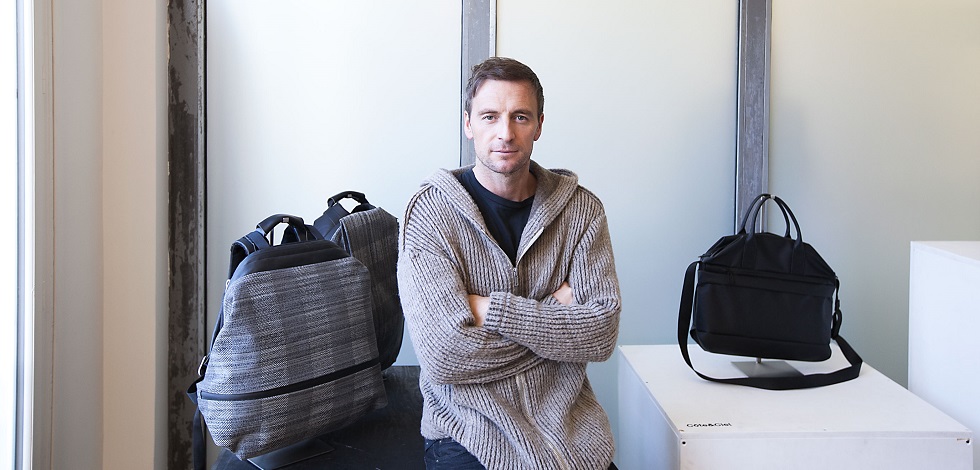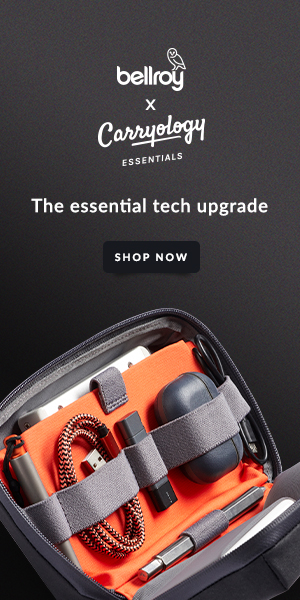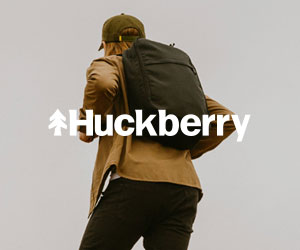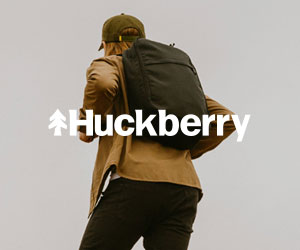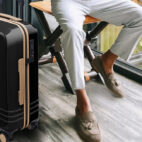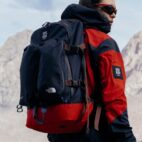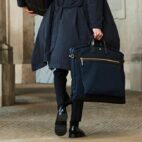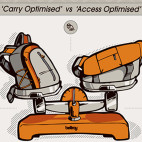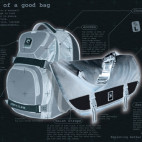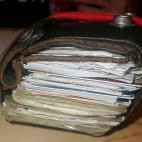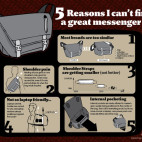Pushing the Horizon | At the Helm of Côte&Ciel
Stephan Wembacher is a bit under the weather. So he says, spread over two chairs at the centre trestle in the fourth storey meeting room of carry powerhouse Côte&Ciel’s Paris HQ.
Wembacher has been in hometown Paris “maybe four weeks since June,” he says, a little sheepish and croaky, body still catching up from the jaunt across Asia and California from which he’s just returned. He eyes around the room as if foreign to it. December sun streams in through Parisian windows, Côte&Ciel backpacks and sleeves set for display on pigeonhole shelves and arty bench blocks. They cut a striking image – here, and in the marketplace – a sleek blend of fabric and form, unusual folds, unique functionality. But for Wembacher, they’re little more than artefacts in a museum. “Everything you see here is old,” he says. “For me, I walk into history.”
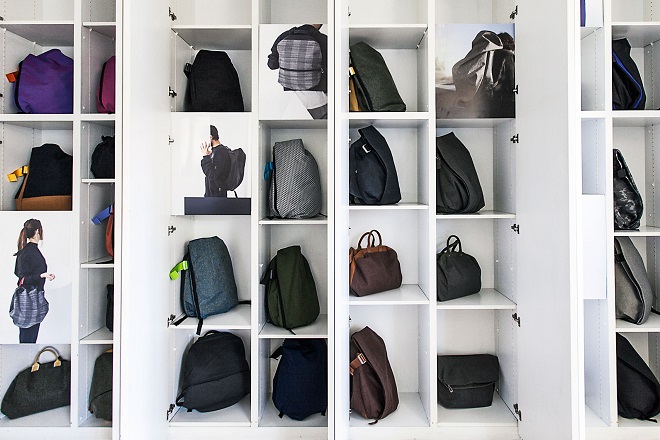
Composed, if not a little cragged, there’s something relaxedly Hollywood about the German-born CEO, whose mind, mutable yet fastidious – hallmark traits of the astrological Virgo sign he says he’s born under – does not waste time on the past. Despite a rigorous schedule, Wembacher’s energy refuses to let up. His mind doesn’t stop, a ceaseless turn over. There’s a lot to occupy it. As well as the affairs of Côte&Ciel, his investment and management company Paper Rain umbrellas two other prominent subsidiaries – CosmoSupplyLab, a Hong Kong-based sourcing and design enterprise; and Damir Doma, a high-end fashion label that is rapidly cutting its niche in the international fashion scene.
In oversized pullover, wearing handsome stubble and a controlled tousle, Wembacher nails the archetype of cool entrepreneur. A peek at his Tumblr site (‘Life. As it comes’; ‘Go Big’) corroborates the obvious typecast – sunset selfies by the Marina del Ray, powder carves on Swiss Alps, cigar huffs with Schwarzenegger and ‘The Rock’ – a bonafide international man of business and leisure.
Yet after an hour freestyling with Stephan Wembacher it’s clear that he is more than mere playboy capitalist. Under the hood, his engine is that rare fusion: adroit aesthete with master builder’s pluck, equipped to transform vision into reality – repeatedly, and fast. The evolution of Côte&Ciel reflects his own broader trajectory: one that came naturally, fuelled by intuition, collaboration, elbow grease and the relentless pursuit of quality.
“Under the hood, his engine is that rare fusion: adroit aesthete with master builder’s pluck, equipped to transform vision into reality – repeatedly, and fast.”
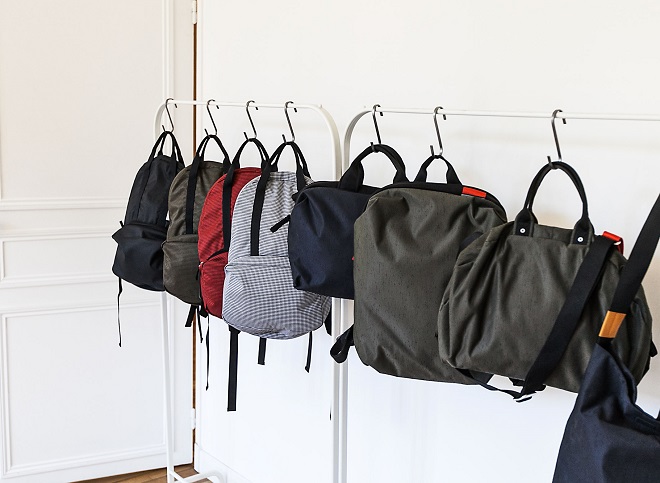
***
It’s summer, 1995 and on the village outskirts of Munich, Bavaria, 18-year-old Stephan Wembacher’s head is screen-deep in an Apple Macintosh, scrawling fresh designs on a primal copy of ‘Illustrator’. The young skateboarding enthusiast could never have predicted that in just five years’ time he’d be a merchandise king, supplying the same company that built his computer with millions of accessory stock for an obscure new gadget – something called an ‘iPod’.
“The young skateboarding enthusiast could never have predicted that in just five years’ time he’d be a merchandise king, supplying the same company that built his computer with millions of accessory stock for an obscure new gadget – something called an ‘iPod’.”
“We had no idea how it was going to go,” Wembacher reflects, recalling the moment when Apple designer Jony Ive invited him to meet Steve Jobs to discuss an in-box sleeve accessory for the nascent music device. Overwhelming first generation iPod sales – with Wembacher’s knitted sock in five colours tagging along for the ride – thrust CosmoSupplyLab, his already skyward sourcing company, into new commercial territory, setting up a decade-long collaboration with the Cupertino-based tech giant.
“It was a massive evolution,” he says, gripping his knee, foot annexing the chair beside him. “Insane quantities.”
And it all began with DIY skate t-shirts. Driven by an interest in American skateboard culture (something relatively scant in Bavaria at the time) Wembacher’s Apple-designed tees were an instant hit with local shops. His father’s business friends hired him to create graphics for them, snowballing into shirts, jackets and baseball caps; soon, every brewery from Copenhagen to Belgium was ordering units by the tens of thousands; European prestige car companies too – Audi, Porsche, BMW, Ferrari; followed by their respective Formula 1 teams. Making giant leaps with each new market, CosmoSupplyLab ballooned into a huge sourcing and product design operation. With school pal and US university business graduate Bern on board, the two began to carve out a ‘power team’ reputation in the industry, “extremely strong on sourcing, extremely tough in deliveries,” says Wembacher, a mouthful of south German inflection. Accounts with Red Bull and Puma led to CosmoSupply’s American ingress, at which point Apple’s iPod boom was set to enter stage right.
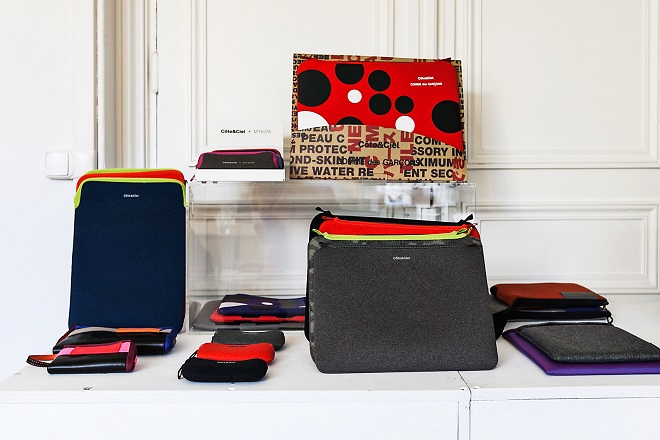
As we know, the iPod was just the beginning for Apple’s commercial renaissance – its MacBook, iPhone and iPad would all need respective accessories. CosmoSupply would be there to provide. By the turn of the decade, Wembacher’s enterprise had metamorphosed into a massive Apple outsourcing machine, delivering immense quantities at a very high level of quality.
For Wembacher, the professional summit marked a moment of reset. “It was not really me to be in a large scale day-to-day production operation like that,” he says. The business element had overtaken his freedom to create; he relegated himself to Chairman of CosmoSupplyLabs, and went searching for the next big thing.
Riding on CosmoSupply’s buoyancy, Wembacher and Bern set up Paper Rain, an investment fund for new enterprises, ideas and a little fun. “Our attitude was: if we find something interesting, we do it,” he says. It didn’t take long to find it.
“Our attitude was: if we find something interesting, we do it”
In Munich, Wembacher was introduced to Croatian fashion designer Damir Doma, Antwerp-trained under Raf Simons, hungry for a hand in getting his new label underway. “I said to Bern, why don’t we do a little fashion?” Seeing potential in the young designer’s aesthetic, Paper Rain threw in capital and staff to get Doma up and running. “We didn’t intend to get too involved in the beginning,” Wembacher says. But Doma took off, gaining instant traction in the market. Paper Rain’s ingress into the fashion world deepened – a pivotal turn that would propel the next stage of Wembacher’s professional evolution.
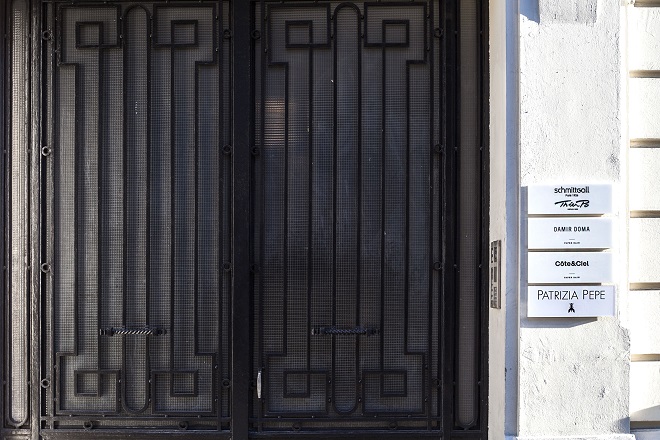
Around this time, CosmoSupplyLab was working with neoprene on a prototype computer sleeve. Not all products made Apple’s cut; many were put aside as samples. A French acquaintance met Wembacher in Munich; he was in charge of sourcing a ‘gift’ for each attendee of an upcoming architects’ congress in Vienna. Spying the blank sleeve in Wembacher’s office, he asked if CosmoSupply might provide a few thousand for the cause.
“I was in the South of France with my family and he (the French acquaintance) called back again,” says Wembacher. “He said: ‘We need a label on it, we think the sleeve will work better with a label.’”
Some of the world’s most iconic brands have erupted in a moment of Promethean inspiration – ‘Virgin’ is said to have come from a scribble on the back of a napkin; the Young brothers coined ‘ACDC’ after their sister spied the acronym on the back of a sewing machine. Côte&Ciel might befit the same grade.
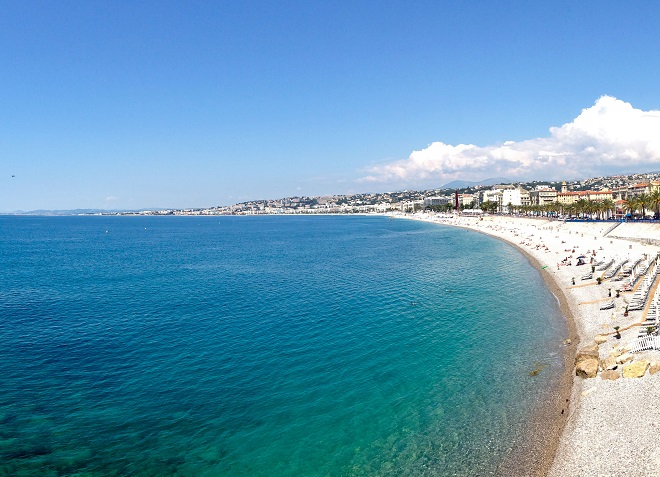
Wembacher hung up his phone and searched out over the azure waters of the sun-kissed French Riviera. “What is ‘coast’ and ‘sky’ in French?” he asked his family. A serendipitous response; not only did ‘Côte et Ciel’ literally mean ‘coast and sky’, but also ‘beyond the horizon’ – a duel entendre that neatly encapsulated a bold new vision and aesthetic. “Plus, French just sounded better,” he says, glancing out to cloudless blue over the tenement chimneys of the 3rd arrondissement.
“Not only did ‘Côte et Ciel’ literally mean ‘coast and sky’, but also ‘beyond the horizon’ – a duel entendre that neatly encapsulated a bold new vision and aesthetic.”
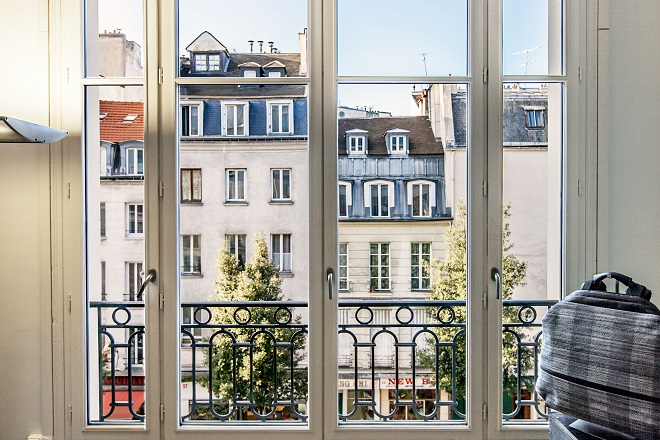
Côte et Ciel was born. But what exactly was it? Wembacher had long envisaged a bag and accessory label to complement Doma in the Paper Rain mix. “We saw there was a real opportunity for people, like us, interested in architecture, in fabric and design, in something not very generic,” Wembacher says. “Most products are usually funded by private equity or big gigantic groups, so they do basic – super cheap material and workmanship, super cheap accessories. At the end of the day they achieve a product of 60 dollars, some bag – for me, I have no interest in researching cheap; it was never in my concept. I’m interested in materials. I’m interested in making it better.”
“I have no interest in researching cheap; it was never in my concept. I’m interested in materials. I’m interested in making it better.”
A CV landed on Wembacher’s desk from a talented French designer eager to escape the artistic void of the corporate world. “I said to her: ‘I have an office, I have this sleeve, we do fashion…maybe just start working with me and see what happens.’”

The two began collaborating on Côte’s first bag designs, the inception of a seven-year-long ‘French-German rivalry’, as Wembacher puts it, an amiable creative tension between his head designer Emilie’s affinity for shapes and concepts, and his own pedantry for functionality and materials. “She tells me I am like a German sports car,” he says. Whatever their aesthetic differences, they agreed on a guiding principle: design had to precede economics. “My head told me: we need to create a great product first – then the business will come.”
“My head told me: we need to create a great product first – then the business will come.”
Paper Rain’s Apple connection helped ensure Côte’s soft entry into the marketplace, with the first products stocked in premium tech stores across Asia. They sold well, but the tech market proved a headache for Wembacher, a mire of cheap materials and margin-first output. It was not the stage he’d envisaged Côte performing on. With the Doma sensibility eddying in the back of his mind, he set his eyes on fashion stores instead, “a path I felt would be more interesting in the long term,” he says.
Looking at Côte’s current line, even if they are, in Wembacher’s mind, “the past”, it’s difficult to avoid their distinct Marais-influenced aesthetic – products more in league with vogue winter coats than load-bearing receptacles. They are anything but generic; that they bump backroom shoulders with Damir Doma and the Parisian fashion ecosystem makes this fact relatively unsurprising. What is surprising is the sense that each bag, despite its individualised form and fabric, feels like a member of some broader whole – an achievement not merely the result of location and fraternity, but the subsequence of a design process that flips pre-existing product construction on its head.
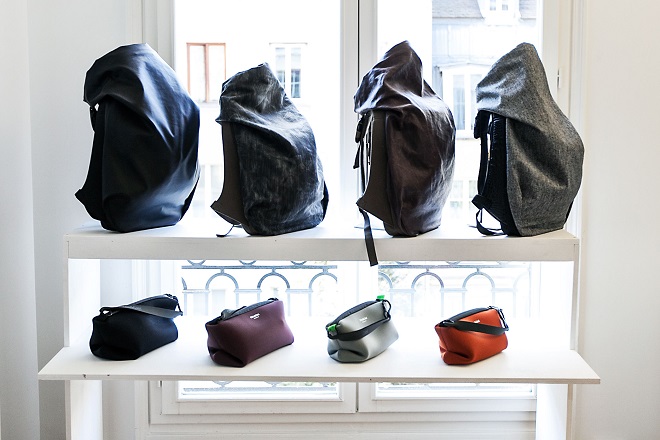
Côte’s 12-month development cycle begins as a hands-on origami of folded paper on the Rue Beaubourg atelier floor. Whereas others draft early design through computer illustration, Côte’s are tangible from word go, given space in the physical realm to breathe, express and evolve. A design DNA emerges, manifesting through intuitive collaboration into a set of core product blueprints that propel creative interchange of materials and accessories.
“There is a consistency in our design language, because everything starts from the same piece of paper,” Wembacher says.
While it’s largely a group effort, the boss is frank about the dynamic, somewhere in between benevolent dictatorship and all-out democracy. “I give briefing frames with main ideas about what I want,” he says. “But it’s all intuitive…whenever we don’t listen to the gut feeling, that’s where we go wrong.”
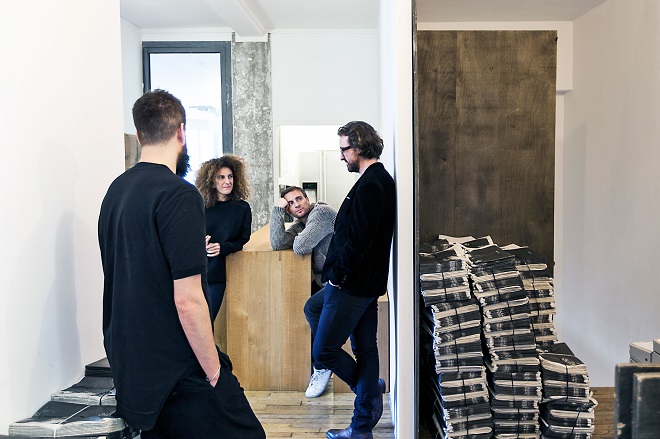
It stands to reason that Côte draws the bulk of its design inspiration from internal reserves. The team is an eclectic collective of professionals who straddle fields as diverse as architecture, graphic design, industrial design and fashion. Their approach is deeply self-directed. Head designer Emilie lives in a small village outside Paris, isolated from trend and influence; Wembacher travels constantly, absorbs what’s happening in the market, but refrains from research.
“Head designer Emilie lives in a small village outside Paris, isolated from trend and influence; Wembacher travels constantly, absorbs what’s happening in the market, but refrains from research.”
As 2015 rolls on, Côte’s evolution is poised for further and faster growth. Eyes returning to the future, Wembacher is optimistic. “We have an infrastructure now, we have a playground. This is the fun part. For us, the next step is to ‘blow it up’.”
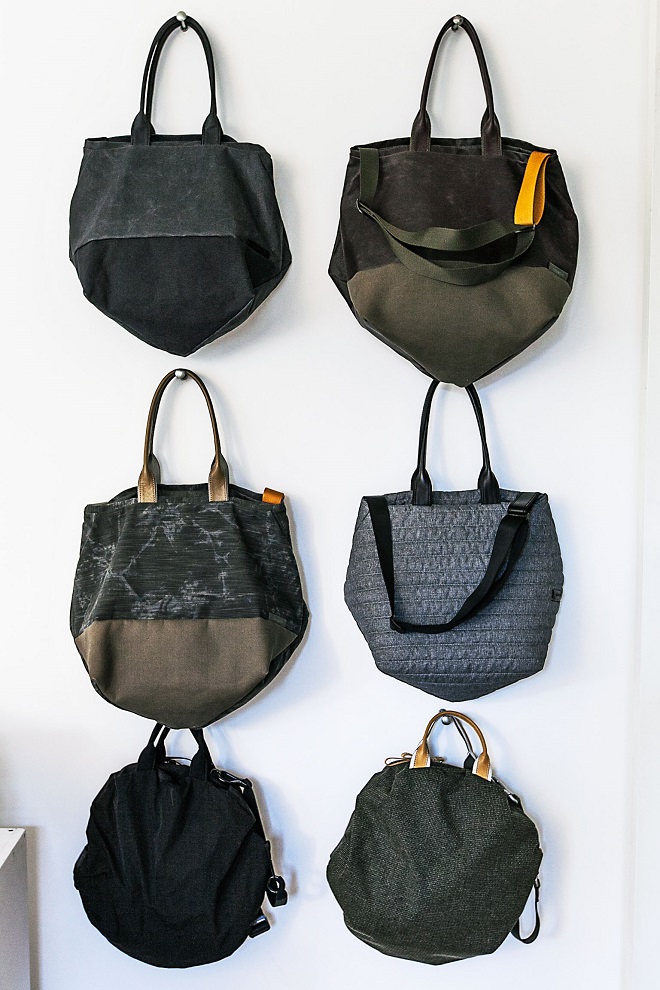
We aren’t privy to a sneak peek of Côte’s 2015 catalogue, but Wembacher’s excitement is enough to indicate there are good things ahead. “Everything new is totally different – much more interesting shapes, much more interesting materials; lots of leather products, a lot more women’s products.” Add a pop up store slated for 355 Bowery, New York City, a new show store in Venice Beach, California, and the weather on Côte’s horizon looks pretty fine.
One might think all this would put a smile on Wembacher’s dial. “I am always unhappy,” he says. “Always in depression,” shying that Bavarian schoolboy smirk yet again. The self-confessed perfectionist is also a pragmatist. “We have a clear idea of where we want to go, but we can’t be perfect,” he resigns. “It’s never finished. It’s just a constant struggle to make it better.”
“It’s never finished. It’s just a constant struggle to make it better.”
–
*Photography by Honor Kennedy
Check out Cam and Honor’s photo and word project on Instagram or #CHKBerlin





 Carry Awards
Carry Awards Insights
Insights Liking
Liking Projects
Projects Interviews
Interviews
